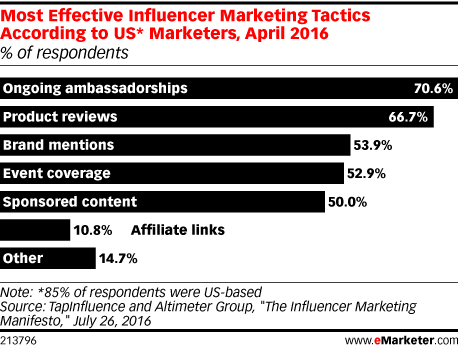Each week, we publish a mishmash of ecommerce-related, insight-infused articles for your to smash through. Just as we collect business information across all of a merchant’s channels in a single place, we’re doing the same for ecommerce-related content from a variety of top tier content creators.
Now more than ever, engagement is the name of the game when it comes to social media, and it can come in any number of forms. In this week’s mishmash, we’re covering some of those ways: we’ve got info on where influencers lurk and how they influence your biz, ways to perfect your snapping skills, how a merchant can go about influencing social conversations, integrating social for the sake of conversions, and — last but not least — the state of measuring and determining your social media’s ROI.
Combining for Conversions
Much of the time when we think about social media, we envision it separately from online stores — it’s reserved for engagement, branding, and content. But taking your social media and integrating it with your online store might have a more positive impact on conversions than you’d think. Practical Ecommerce describes several ways where social integration successfully persuades consumers to buy; allow site visitors to log in to their accounts via social media; use visual social platforms like Instagram or Pinterest to beef up product appeal; and embed social reviews and comments that serve as social proof.
Making Your Snapchat Snappy
It’s no secret that Snapchat is picking up steam in the world of social media. But what remains a mystery for many interested merchants is how to create content for the unique platform. It’s markably different from standard ones like Facebook and Twitter, and its users tend to skew heavily younger, with millennials and younger dominating it. If that’s your audience, check out these eight content ideas by Social Media Examiner and give ’em a try. Reward followers and encourage your audience to connect with your business by offering exclusive looks or promos. Hold a Q&A or snap yourself going about the day-to-day to forge a personal relationship with your following.
Protect and Inject the Conversation
No merchant wants to be left out of the conversation, especially when it’s something that they’re related to, like their market. As people — potential customers — chat on social media platforms, it’s an opportunity to inject yourself into the conversation. If someone fields a random question on Twitter related to what you do, it’s an opportunity to help while introducing your brand. And, in a more direct way, social media is unfiltered feedback, whether it’s a complaint about you or a competitor, or pure appreciation for something you’ve done.
But, considering the noise on social media, it can be difficult to hear everything. For that, Shopify has a list of 8 social media tools to help you listen to the conversations around you, all while presenting you with opportunities to protect your image (if someone is complaining) and capitalize on conversations (if someone has a need you can solve). Oh, also check out this stellar entrepreneurial advice from 9 of social media’s top marketers.
Influencing the Influencers
Working with influencers can work wonders at introducing your brand to an audience that’s receptive to your products. More than likely, the influencer’s audience is heavily influenced (what a surprise) by their words, so a positive mention very well could mean a positive jump in sales. But where are those influencers reaching out to their followers, and how are merchants working with them? eMarketer covers some research on the topic, finding that the majority of influencers are operating on a mix of social platforms. As far as partnering with influencers, most merchants (70.6%) develop an “ambassadorship” wherein the influencer advocates for the brand. Other popular options include product reviews, brand mentions, and sponsored content.
Spending More on a Little
Is it clear that social media (and mobile) are impacting a business’ performance? Not really, according to this CMO survey by Duke University. That said, growth is (still) predicted to blow up in the coming years, and with that comes spending. Nearly 12% of marketing budgets are devoted to social media, a gradual uptick of nearly 3% in spending over the past few years. And spending is expected to increase on social media, regardless of the lack of impactful performance. Over the next year, CMO respondents said it would rise to nearly 15%.
Agreement and Investment
eMarketer agrees with Duke’s CMO survey — in research by Simply Measured, the financials related to social media mattered most to marketers. Measuring ROI is, without a doubt, the biggest challenge facing merchants who utilize social media (61.1%), and securing a budget arrived in second place (38.2%). The difficulty of determining ROI has a mixture of causes, but social media platforms themselves have a major role to play in the process. Of the most popular channels, Facebook absolutely dominates in terms of ROI, with nearly 96% of respondents picking it as most effective for determining and delivering results. It’s not too hard to imagine why — the platform is well-established, has a huge user base, and offers tools merchants can use to measure their performance.







